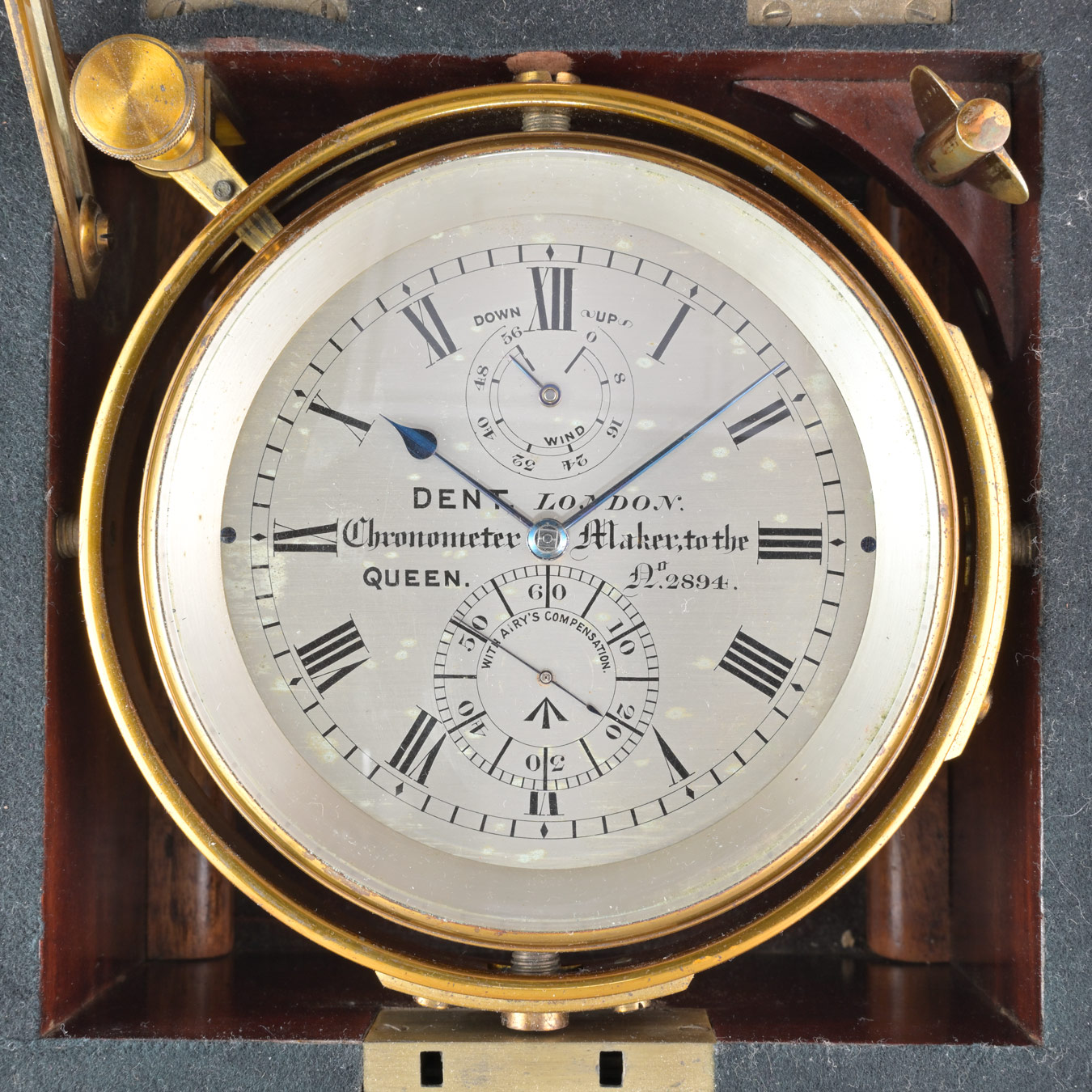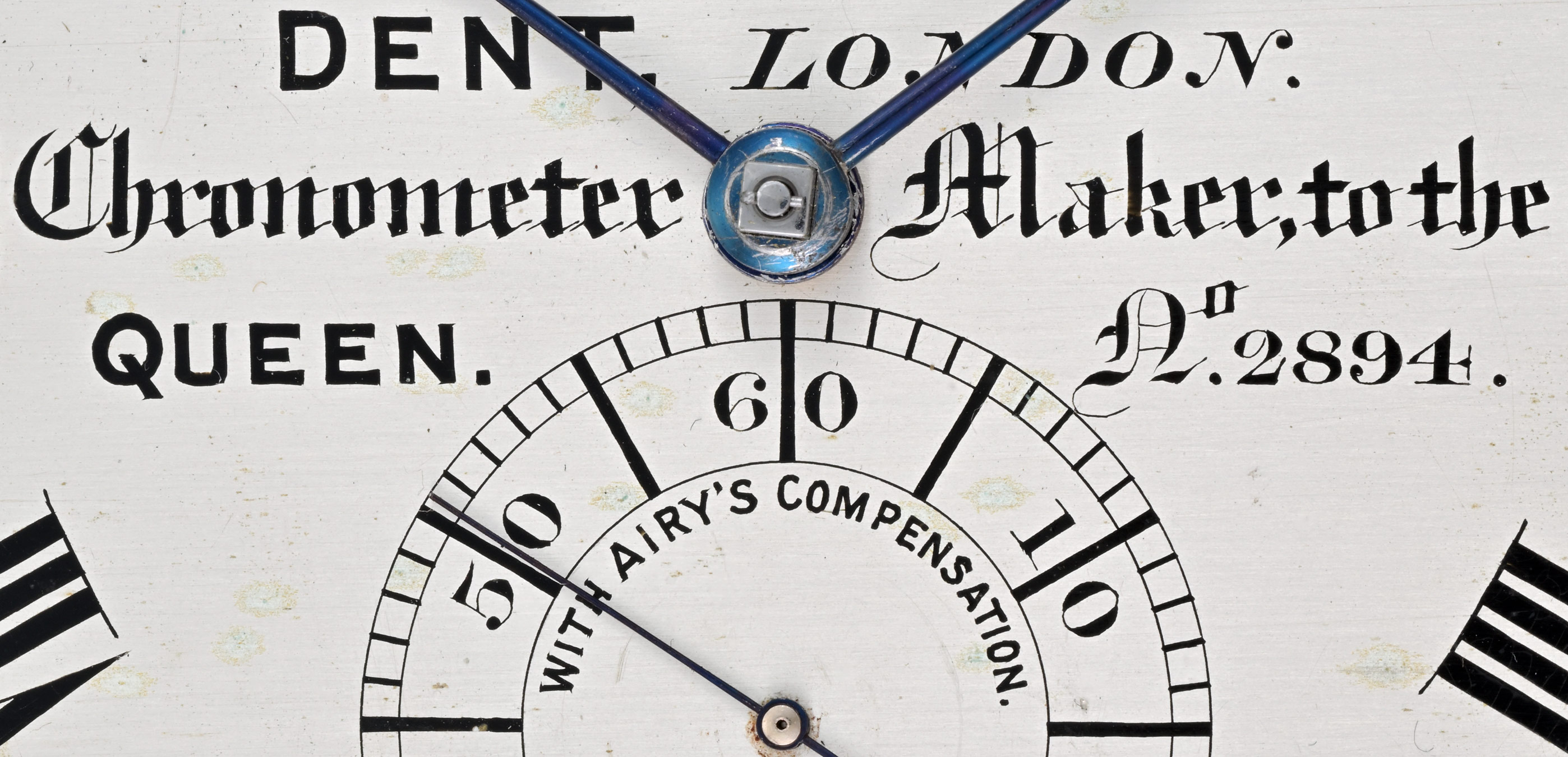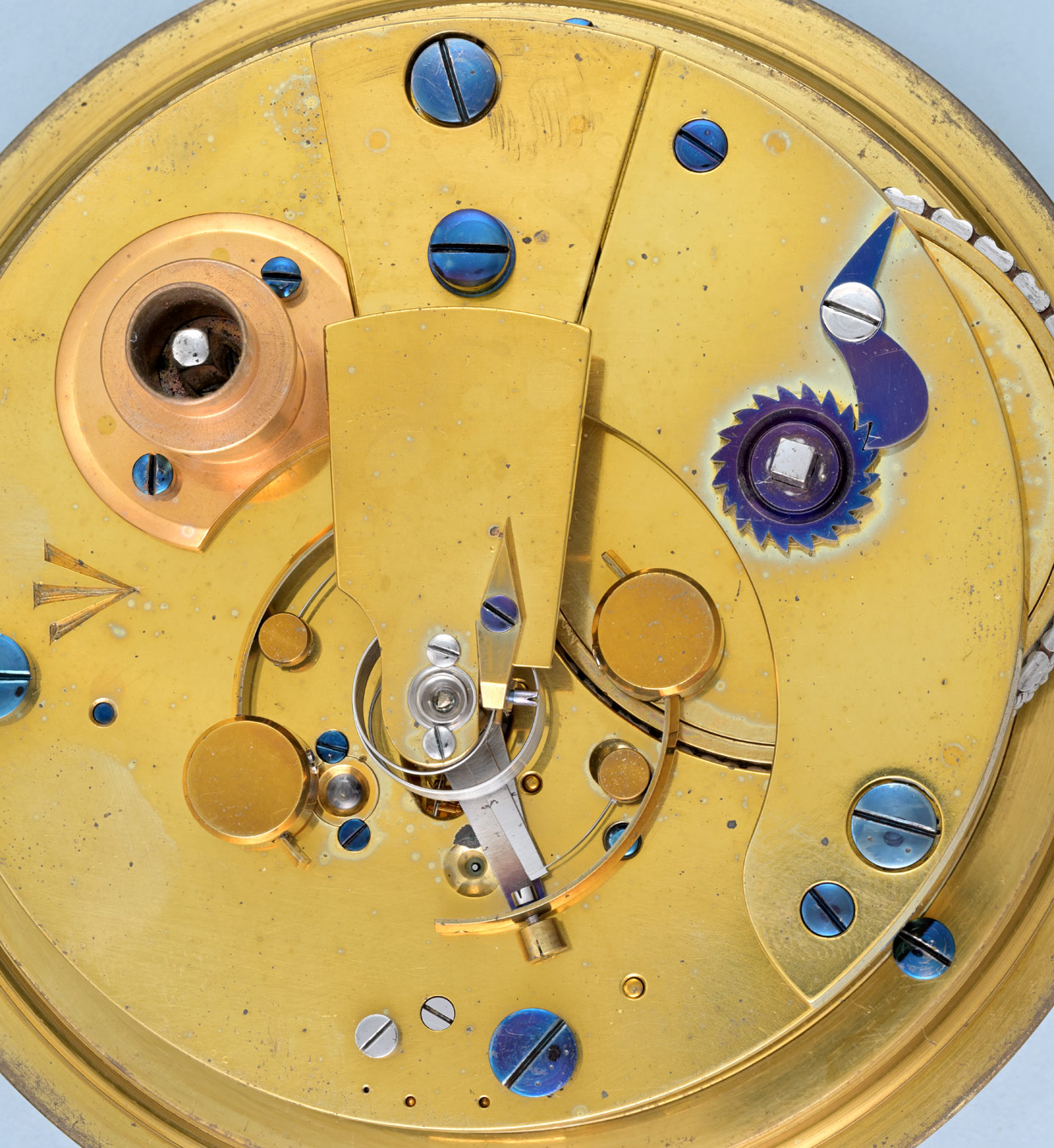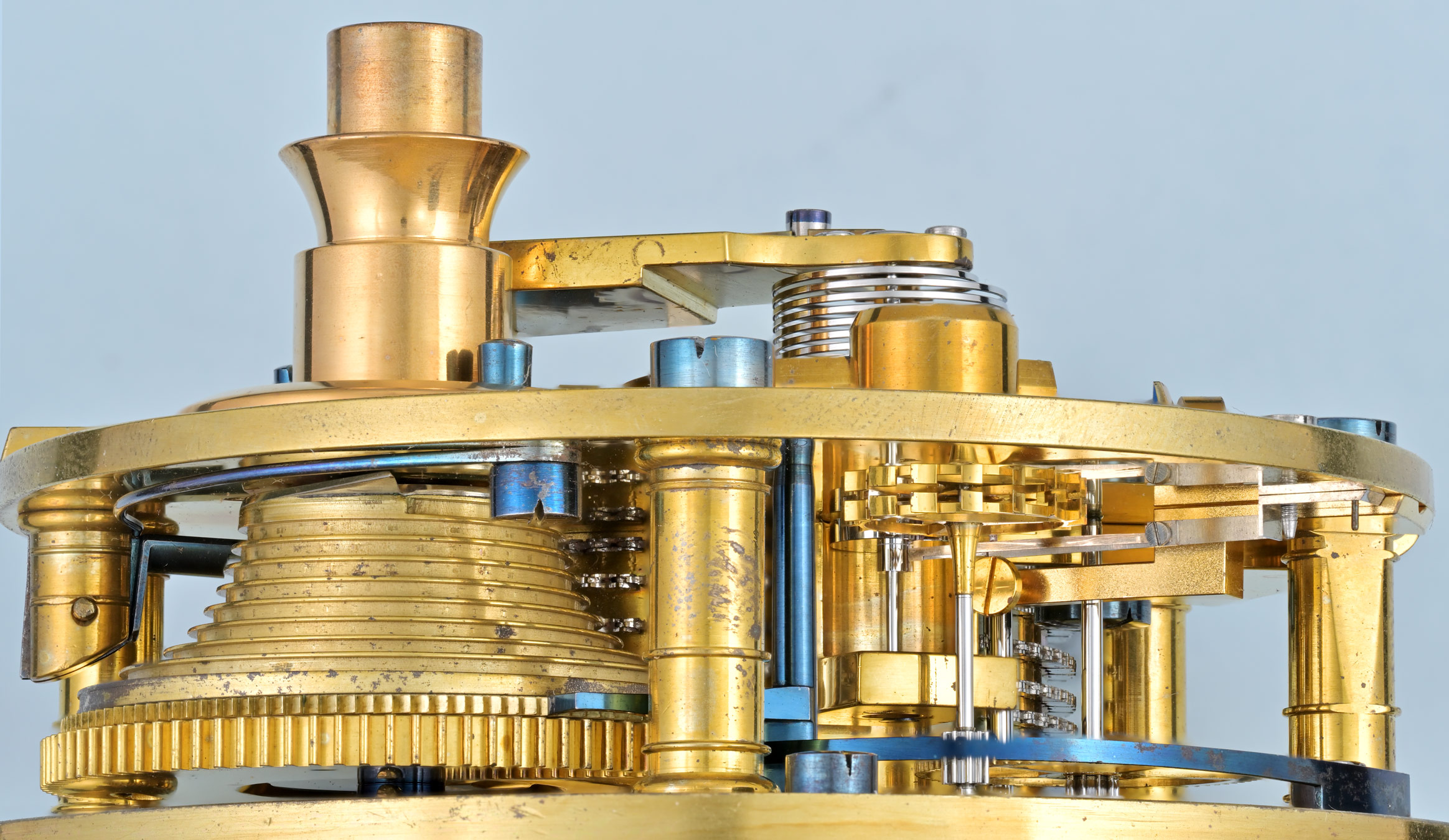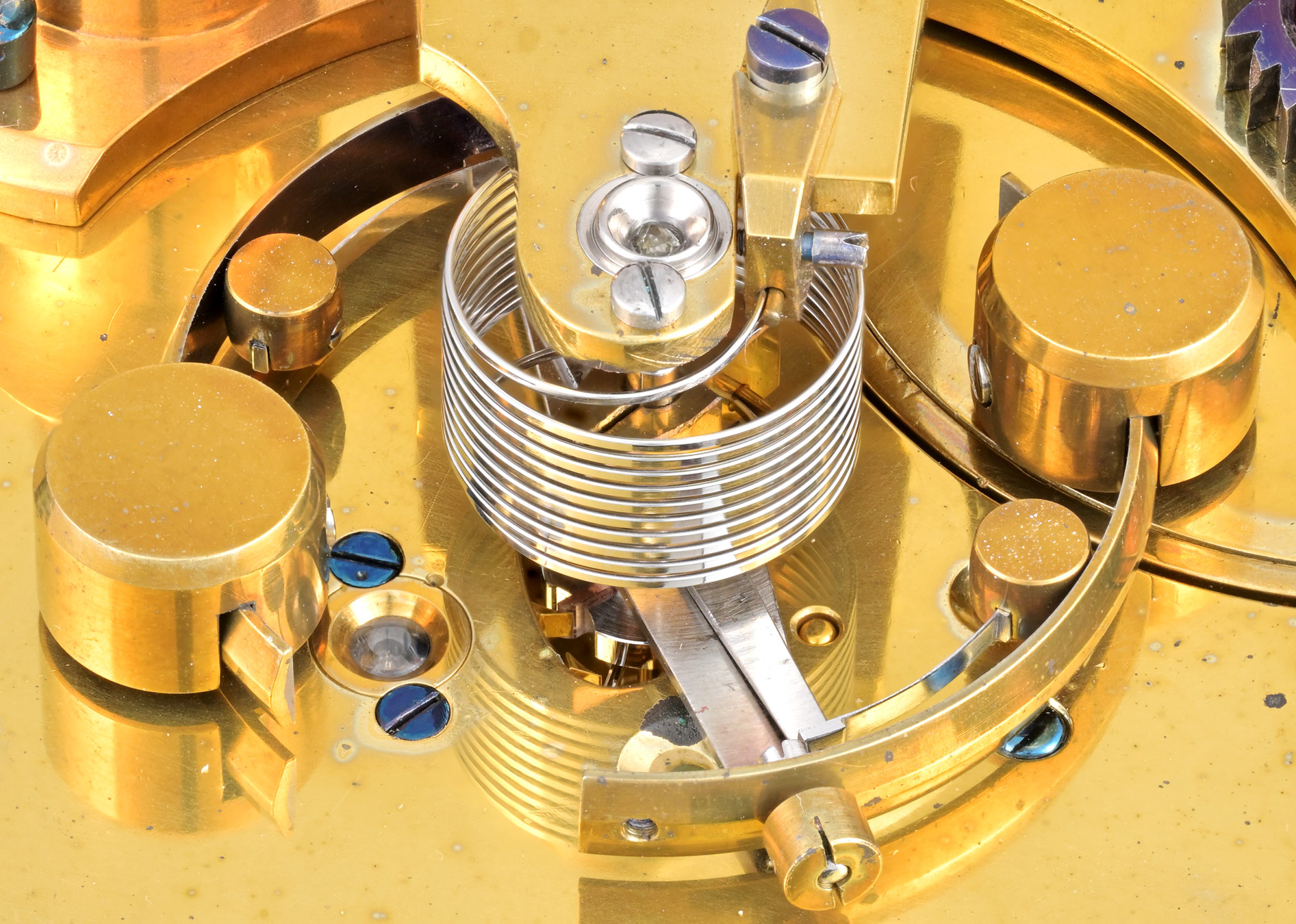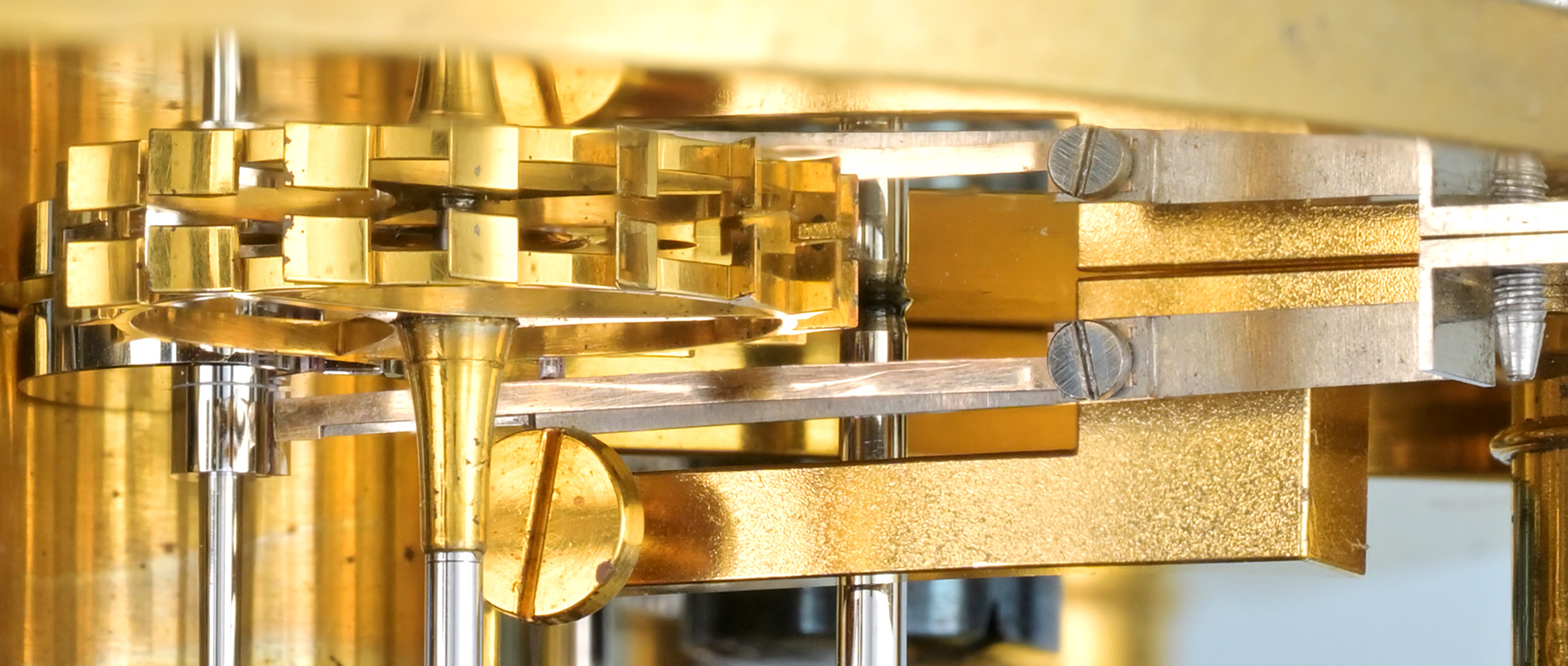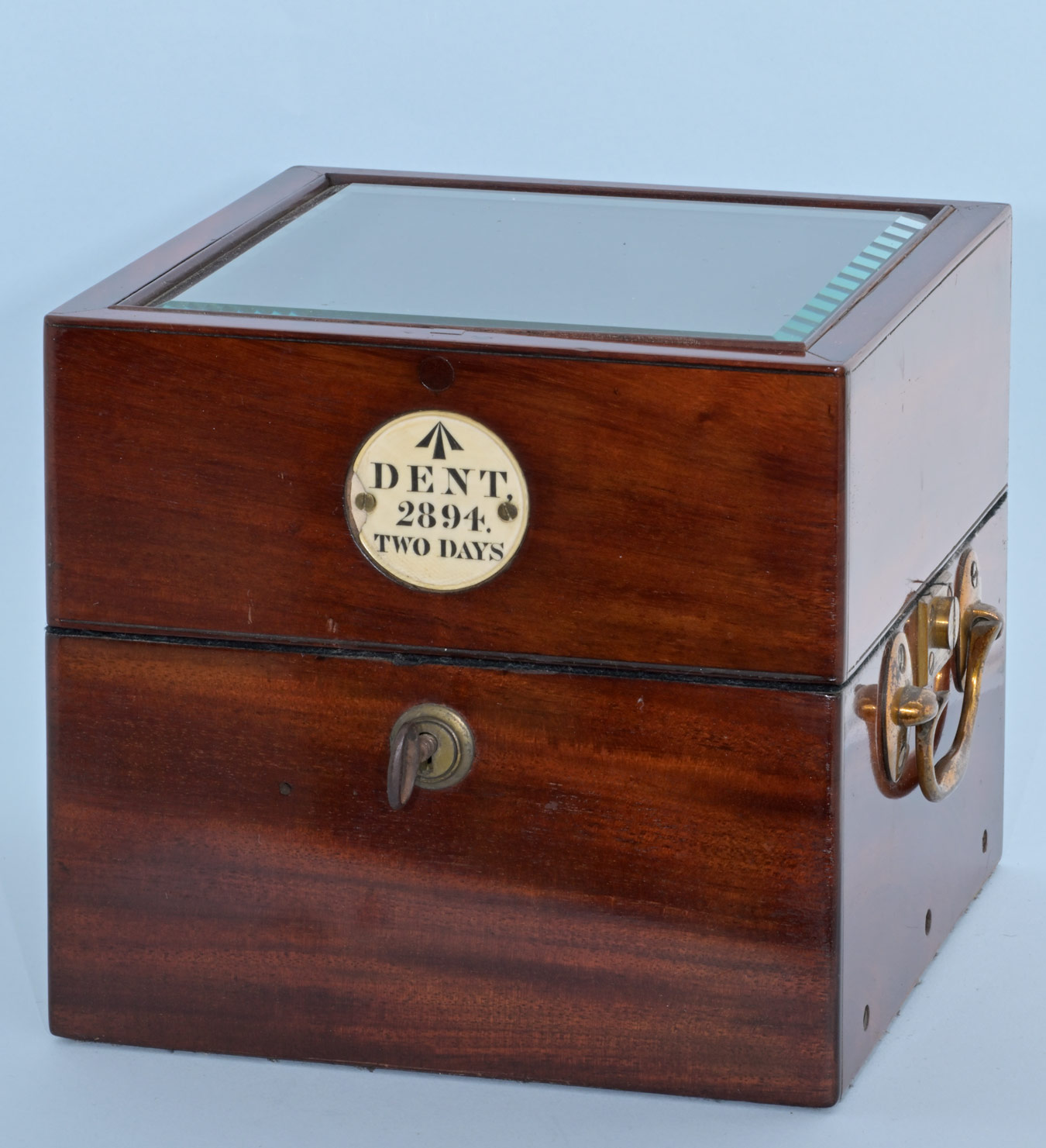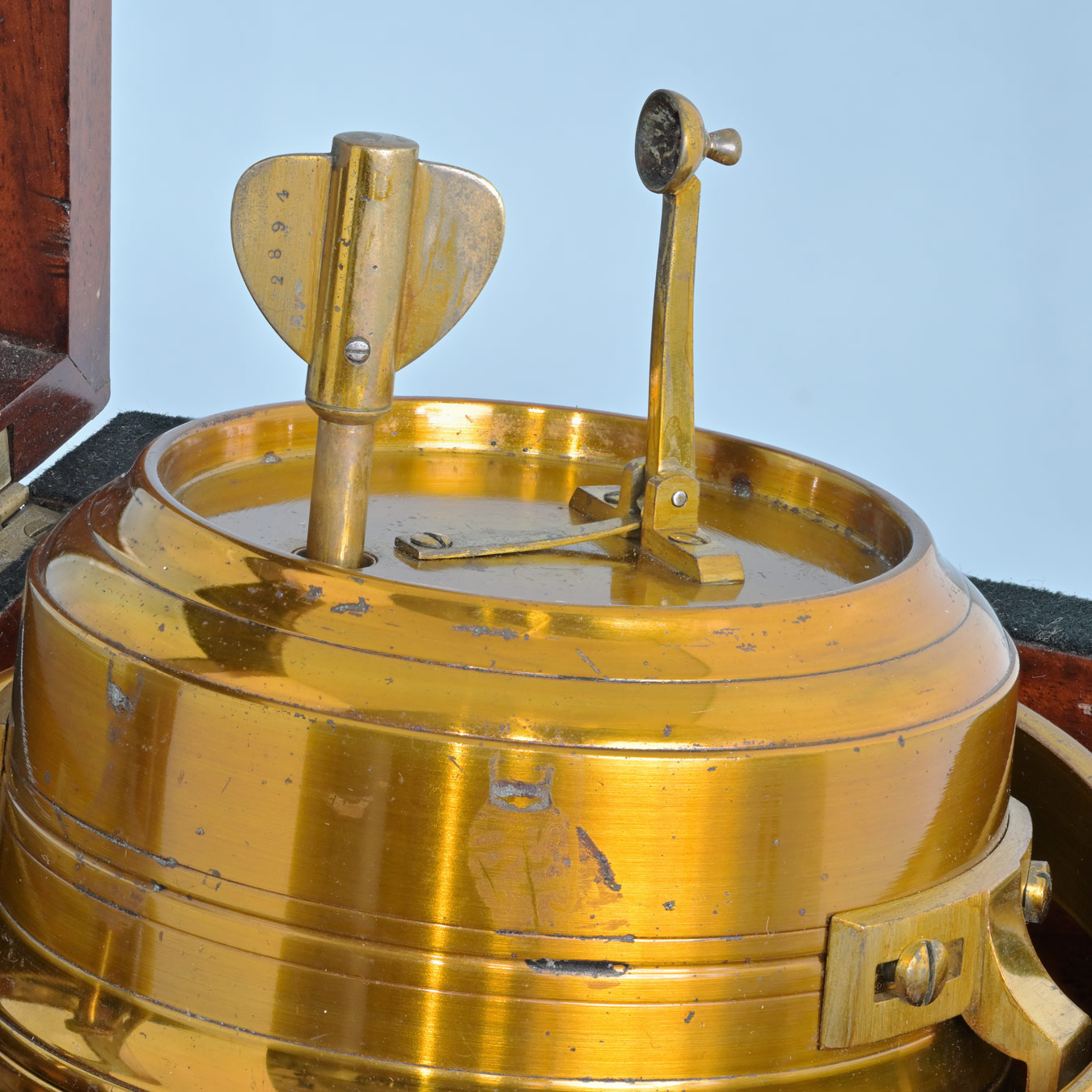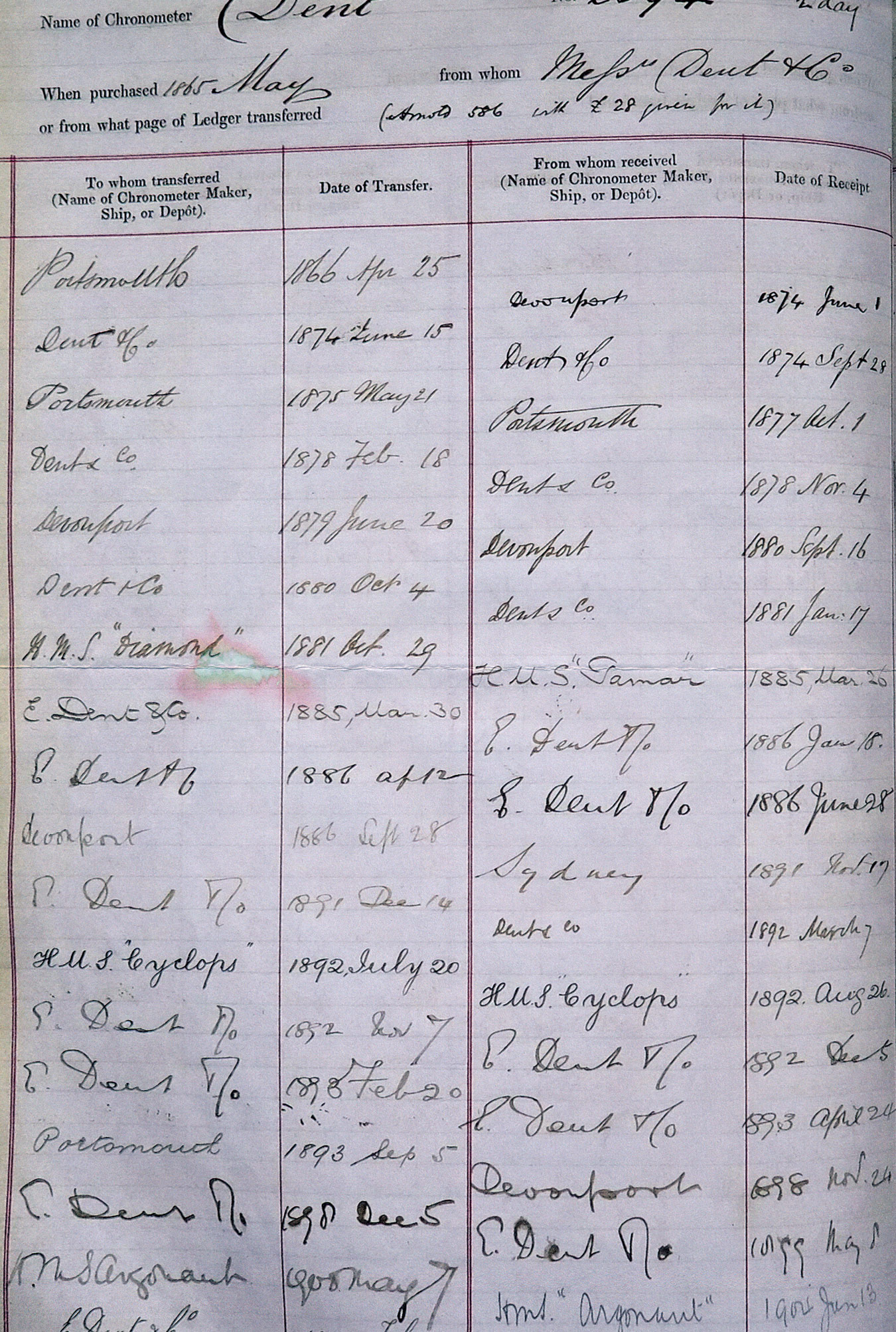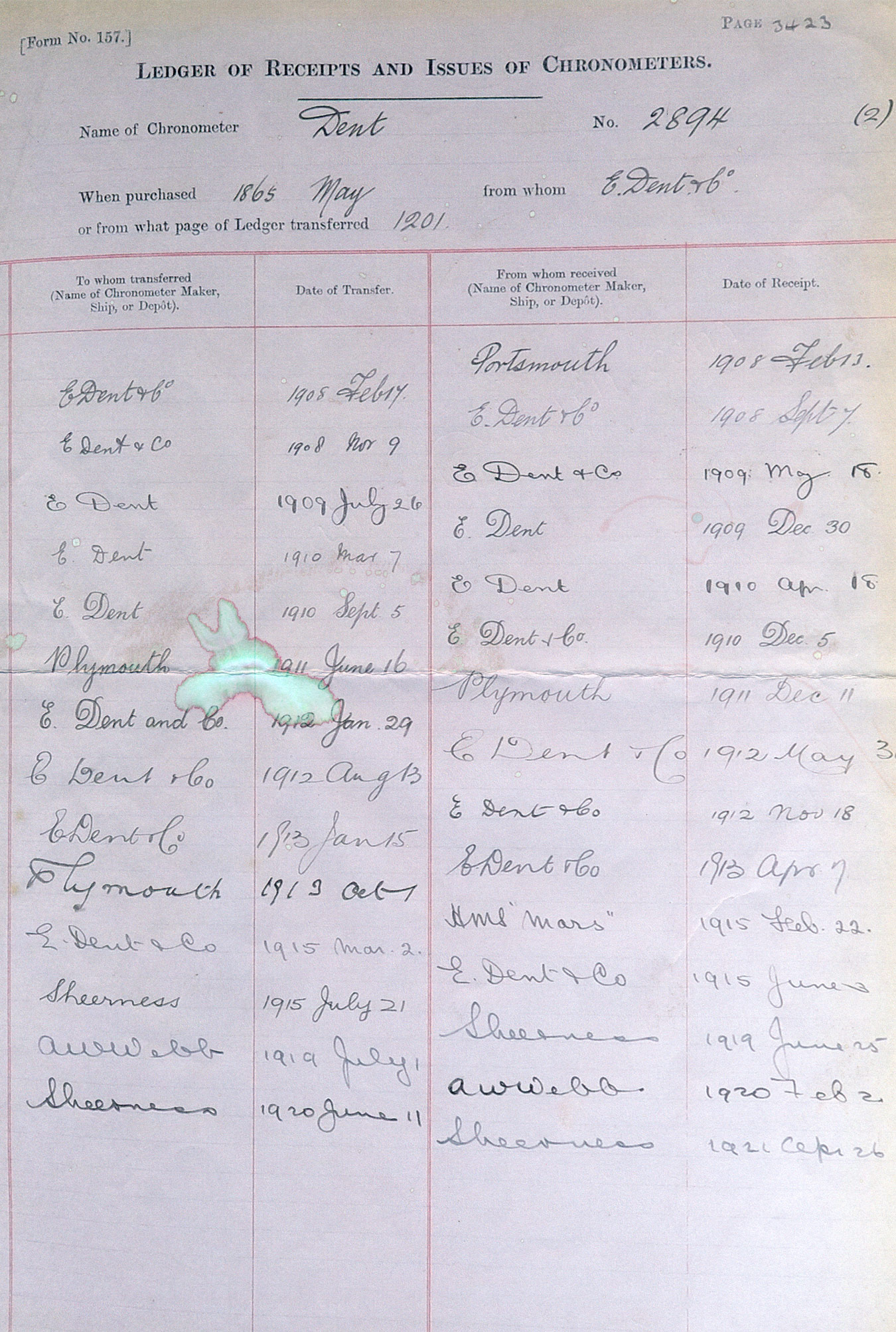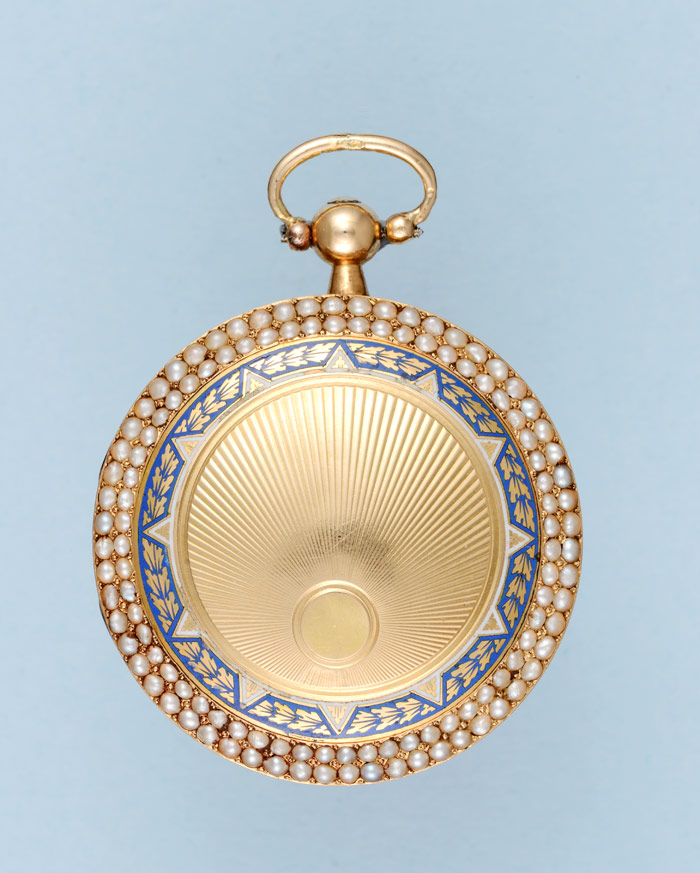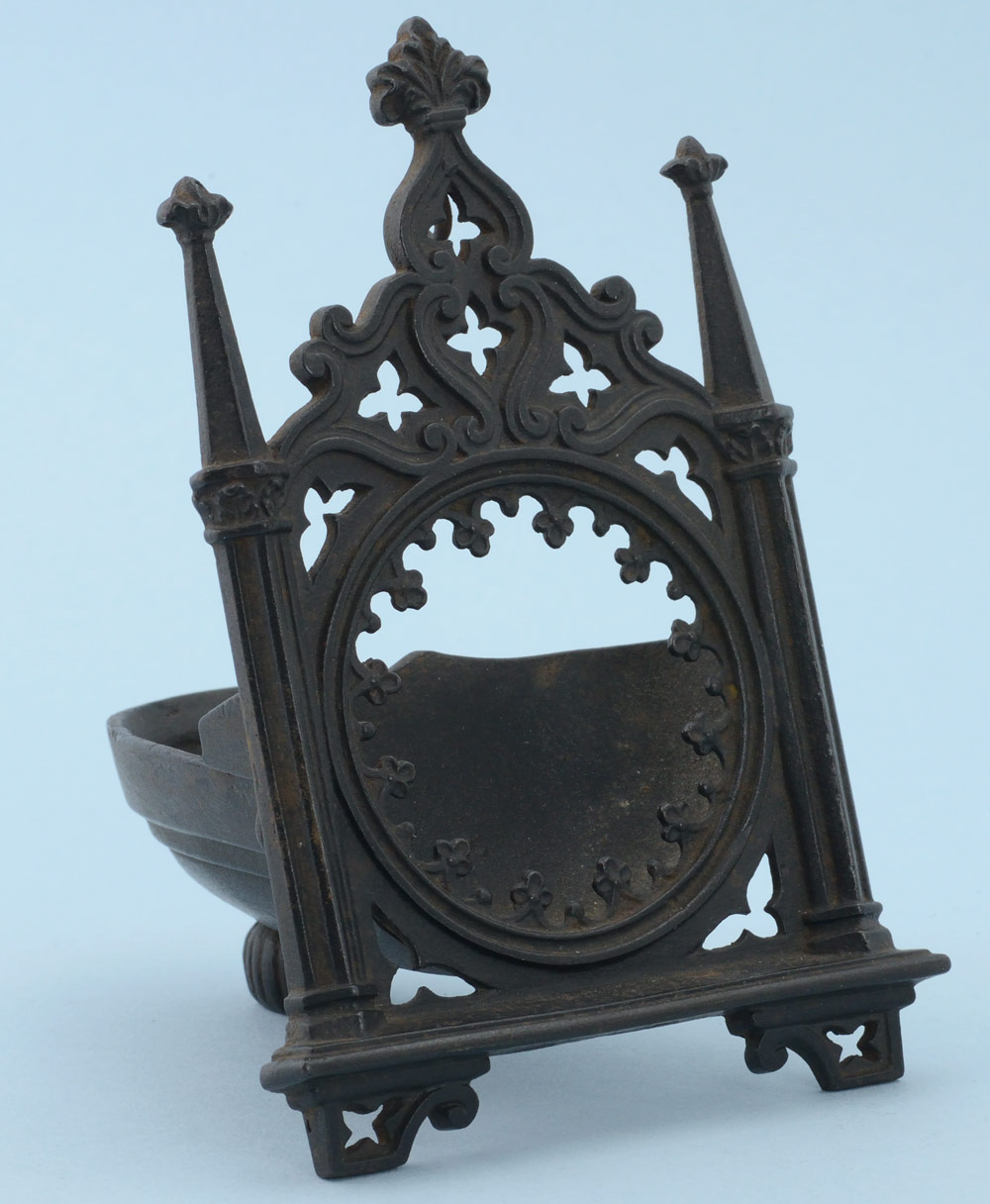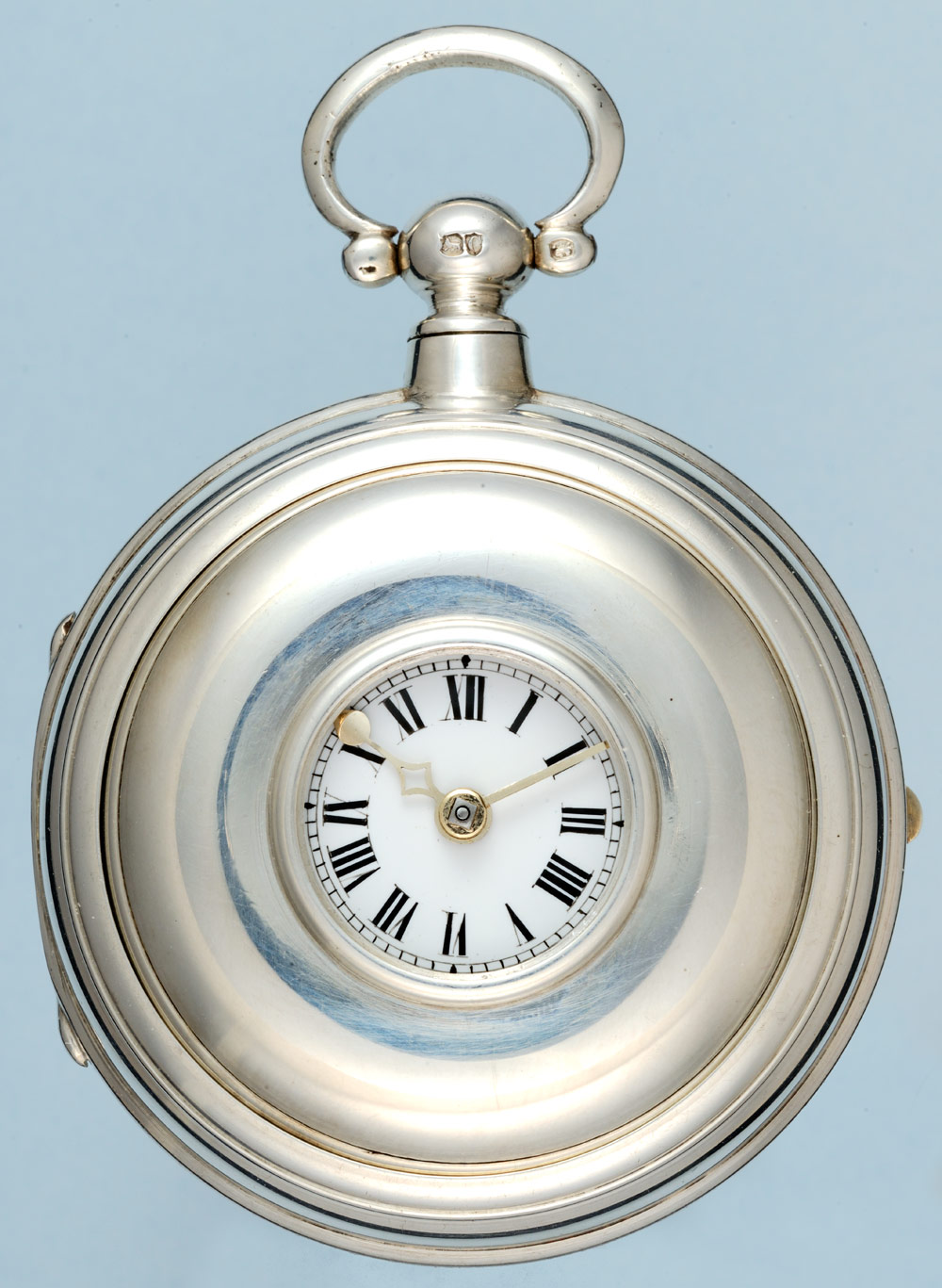A10972
Dent Marine Chronometer with Airy’s Bar
£11,000.00
Circa 1860
Diameter [dial] 102 mm
1 in stock
Description
A mid 19th Century English two day marine chronometer by Dent with Airy’s bar in a mahogany box. Full plate brass keywind fusee movement, four turned pillars secured by blue steel screws, engraved broad Ministry arrow. Harrison’s maintaining power with blue steel click and spring, blue steel barrel ratchet wheel and double toothed click on the barrel bridge. Plain brass cock, diamond endstone, two arm compensation balance with two circular weights and two timing nuts, Airy’s bar with two smaller circular weights resting against the rim. Freesprung palladium helical hairspring. Earnshaw spring detent escapement, escape pivots with endstones. The movement secured to the gilt dial plate by three blue steel screws. Engraved signed and numbered silvered brass dial with subsidiaries for seconds and power reserve indication. Broad Ministry arrow in the seconds subsidiary, Roman numerals, blue steel hands. Signed and numbered turned brass bowl, sprung hinged dust cover to the winding aperture. Screw brass bezel with flat glass. Brass gimbals and locking mechanism, numbered brass ratchet key. Two tier mahogany box, the top lid having been removed in common with most Ministry marine chronometers. Signed and numbered circular plaque with the broad Ministry arrow, folding brass handles.
Related products
-
Pearl Set Gold and Enamel Pendant Watch

A small early 19th Century Swiss verge in a pearl set gold and enamel full hunter case. Full plate gilt fusee movement. Finely pierced and engraved bridge cock with polished steel endstone, plain three arm gilt balance with blue steel spiral hairspring. Silver regulator dial with blue steel indicator. Winding through the white enamel dial, Arabic numerals, gold Breguet hands. Gold full hunter case, the bezels set with two rows of split pearls. Both covers with engine turned centres bordered by light blue champleve enamel. The front cover opened by depressing a button in the pendant.
Circa 1820£1,600.00 Add to cart -
Small Cast Steel Watch Stand

An unusual small architectural watch stand of cast steel Flanked by two columns the aperture for the watch bordered by trefoil decoration. Small hook and cast pouch for the watch, a large well behind, perhaps for an oil lamp.
Circa 1880£350.00 Add to cart -
Silver Half Hunter Pair Cased Verge

A 19th Century English verge in a silver half hunter pair cases. Full plate fusee movement with round pillars. Pierced and engraved round cock, polished steel regulator on top plate below the plain three arm steel balance. Half hunter style white enamel dial with two concentric chapters of Roman numerals, only the inner showing unless the front cover is opened. Gold half hunter hands. Matching silver pair cases, the inner with a broad border to the front bezel, small glazed aperture at the centre. Silver pendant and bow, maker's mark “HWG” in conjoined circles and number corresponding to that on the movement.
In excellent overall condition.Hallmarked London 1878£890.00 Add to cart





